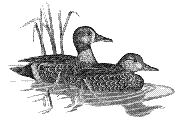United States Fish and Wildlife Service

Waterfowl Management Handbook
Date of this Version
January 1988
Abstract
Over 40 species of North American waterfowl use wetland habitats throughout their annual cycles. Survival, reproduction, and growth are dependent on the availability of foods that meet nutritional requirements for recurring biological events. These requirements occur among a wide variety of environmental conditions that also influence nutritional demands. Recent work on nesting waterfowl has identified the female’s general nutrient needs for egg laying and incubation. Far less is known about nutritional requirements for molt and other portions of the life cycle, particularly those during the non-breeding season. Although information on specific requirements for amino acids and micronutrients of wild birds is meager, the available information on waterfowl requirements can be used to develop waterfowl management strategies. For example, nutrient content of foods, nutritional requirements of waterfowl, and the cues waterfowl use in locating and selecting foods are all kinds of information that managers need to encourage use of habitats by feeding waterfowl. Waterfowl nutritional needs during the annual cycle and the nutritional values of natural foods and crops will be discussed below.


Comments
Published in Diana H. Cross and Paul Vohs (eds.) Waterfowl Management Handbook. Fort Collins, CO: U.S. Fish and Wildlife Service, 1988 . Online at http://www.nwrc.usgs.gov/wdb/pub/wmh/contents.html